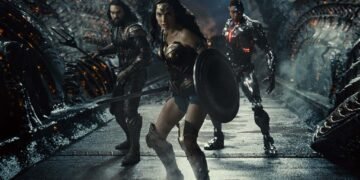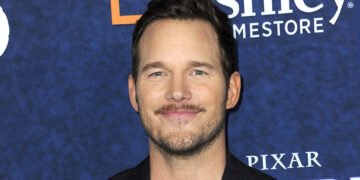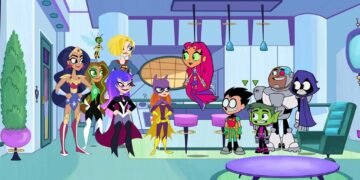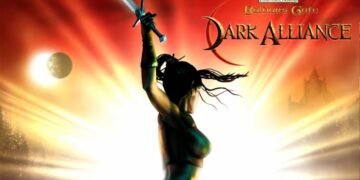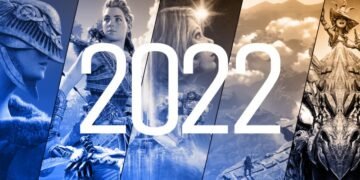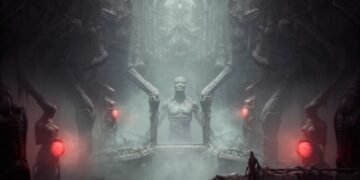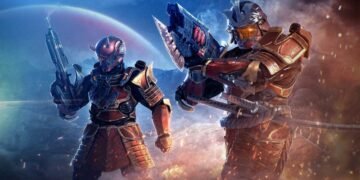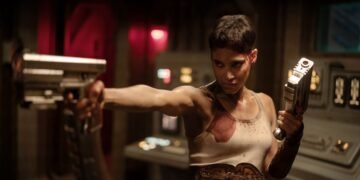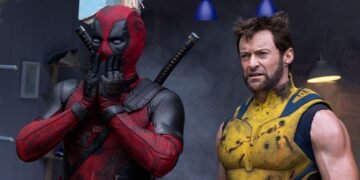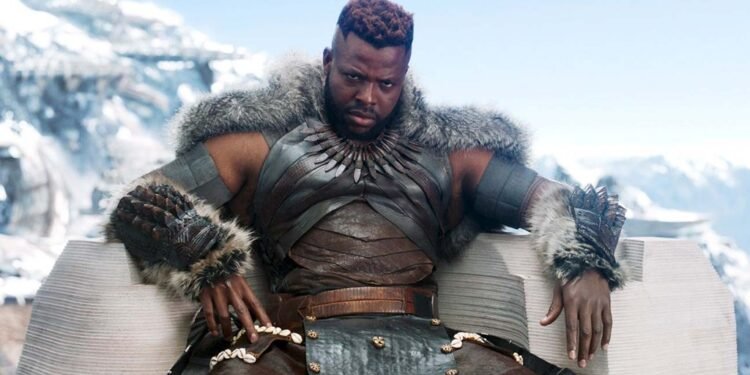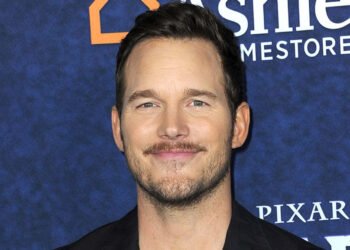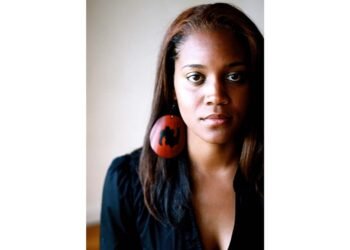While no details about Coogler’s pitch for the series have been revealed, or whether the other series he’ll have a hand in will also be set in Wakanda, there are plenty of possibilities from Marvel Comics that would make for excellent story fodder. Regardless of whether the series are set after the events of Black Panther II, or before the events of the first film, there is a rich tapestry of history to serve as inspiration.
M’Baku and the Jabari Tribe
M’Baku (Winston Duke) not only proved to be one of the breakout characters in Black Panther, he was also a testament to the importance of Black artists reinventing stereotypical characters, as was the case with his comic book counterpart, Man-Ape. Positioning M’Baku as a rival turned ally, a brother even, proved to be a far more interesting turn for the character than setting him up to fulfill the villain role he inhabits in the comics. And certainly the character has earned more time in the spotlight, having proven his leadership capabilities in the final battles of both Avengers: Infinity War (2018) and Avengers: Endgame (2019). Audiences only got a small look at the Jabari Tribe’s mountain dwelling in Black Panther, and it would be interesting to not only spend more time there but to see how M’Baku’s joining of Wakanda’s National Council changes the tribes, their views on technology, and their relationship with their god, Hanuman. It feels like there’s a lot of room to explore the intersection of politics and religion when it comes to the Jabari Tribe’s place in Wakanda.
Killmonger Chronicles
Erik Killmonger may have died at the end of Black Panther, but he’s a villain audiences still can’t seem to get enough of, and given recent comments about a possible return, neither can Michael B. Jordan. Regardless of whether the character is resurrected for the sequel, something that’s been done to his comic book counterpart numerous times, there’s a lot of intrigue surrounding Killmonger’s past. Black Panther revealed that he was a former U.S. Navy Seal who fought in Iraq, and later served as a black-ops mercenary with ties to the CIA. It’s those mercenary years that would be most interesting to explore, seeing Killmonger as an assassin hired to hunt down some of the most dangerous criminals in the MCU, from Madripoor to Latveria. The opportunity to see how Killmonger became the man we see in Black Panther, to find out what global ideologies influenced him, and see him earn each of those scars, feels like a story worth telling, and perhaps even a gateway for more MCU projects with villains as leads.
T’Chaka and Klaue Sr.
T’Chaka, portrayed by both John Kani and Atandwa Kani, wore the mantle of Black Panther before T’Challa, and it is a role that the comics have spent numerous issues covering. While the character’s World War II history and partnership with Captain America from the comics wouldn’t fit in the timeline of the MCU, there is still room to explore the kind of hero he was before the age of Avengers, and his efforts to prevent the colonization of Wakanda. And if the Nazis weren’t able to lead the charge for colonization in the MCU, then surely HYDRA would have set its sights on the country and its Vibranium. In the comics, T’Chaka has a long history with Ulysses Klaue and his father, Colonel Fritz Klaue. Although Ulysses (Andy Serkis) was killed by Killmonger in Black Panther, there’s a chance, by way of Fritz Klaue in the past, who had ties to HYDRA, for a more comic book-influenced version of the character to emerge: Klaw, the Master of Sound. If there’s one thing that was disappointing about Ulysses’ early demise is that audiences never got a chance to see him turn himself into pure sound. It looks way cooler on the page than it sounds, but in any case, T’Chaka’s reign as Black Panther and the introduction of Klaue Sr. provides the opportunity to chronicle Wakanda’s first war with outsiders, and could provide a further motive for Ulysses Klaue breaking into Wakanda with the help of N’Jobu (Sterling K. Brown).
Bashenga – The First Black Panther
Little is known about Bashenga, who until recently and the discovery of the Avengers of 1,000,000 B.C., was the first to wear the mantle of Black Panther. Bashenga is a warrior shaman who had a vision of the panther god, Bast, and ended the war between the five tribes over the Vibranium Mound. Known for wielding a mighty spear, he emerged as Wakanda’s first king. Given how unexplored the character — along with the origins of Wakanda — has remained, Bashenga’s story could break new ground in the MCU, allowing for an exploration of Wakanda before it became known for its technological achievements, and before it was able to exist in isolation. And, based on what we know of the Eternals, there’s the potential to connect the mythology of that upcoming film with Bast, in a time when aliens disguised as gods walked the Earth.
Queen Divine Justice and the Dora Milaje
What does it take to become a member of the royal guardsmen, the Dora Milaje? Undoubtedly years of training, but also the desire put the country above oneself. Okoye (Danai Gurira) has represented much of what the Dora Milaje stand for. But what would happen if a newcomer, with her own sense of style and strong opinion, wanted to join their ranks? This was essentially the idea behind Christopher Priest’s introduction of Chanté Giovanni Brown in the pages of Black Panther. A teenager who grew up in America and became a Chicago-based activist, Queen Divine Justice, discovered she had Wakandan heritage. Seeking to learn more about that heritage, Brown joined the Dora Milaje, though the cultural differences caused her a number of difficulties. It would be fascinating to see the character approached now through the lens of modern social justice, and how a Black woman raised in America changes and is changed by the Dora Milaje.
Kasper Cole: White Tiger
Near the end of Christopher Priest’s influential run on Black Panther, a new character took over the mantle from T’Challa. An NYPD officer in the narcotics and organized crime department, Kasper Cole was a far cry from T’Challa. In fact, Priest pitched the character as a dark satire of Peter Parker, a character with awful luck, sharing a small apartment with his pregnant girlfriend and mother. As a biracial man in New York City, Cole’s experiences of being both Black and a cop create complex identity issues. After impersonating the Black Panther, Cole earns T’Challa’s respect and is eventually given a synthetic version of the heart-shaped herb and a white costume. Cole emerges as the White Tiger, an ally of Black Panther who fights to protect Harlem while learning to respect the Wakandan tradition he’s been adopted into. If Queen Divine Justice is a character who brings a bit of America to Wakanda, then Kasper Cole is a character who brings a bit of Wakanda to America. Both characters could exist in the MCU as living embodiments of Nakia’s (Lupita Nyong’o) cultural exchange program, expanding the influence of Wakanda.
Whatever Coogler decides to do with the Black Panther mythos on Disney+, there’s no doubt that he will bring the same attention to detail, history and culture as he did to his 2018 film. Perhaps more than any other franchise in Marvel Studios’ stable at the moment, Black Panther, by way of existing in its own fictional country, has the biggest opportunity to expand the MCU, and perhaps enrich our understanding of the value of these stories.

